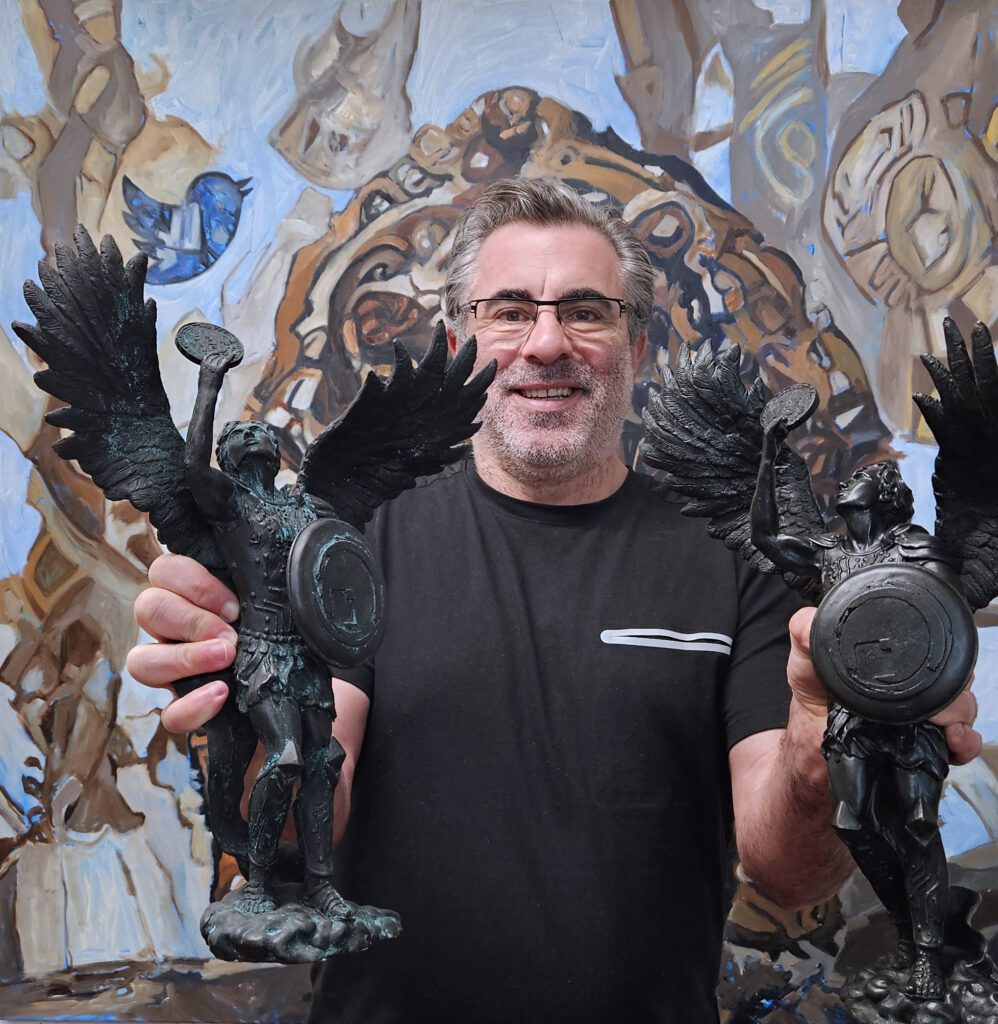Nfts
Are Bored Apes still a thing in 2024? An investigation.
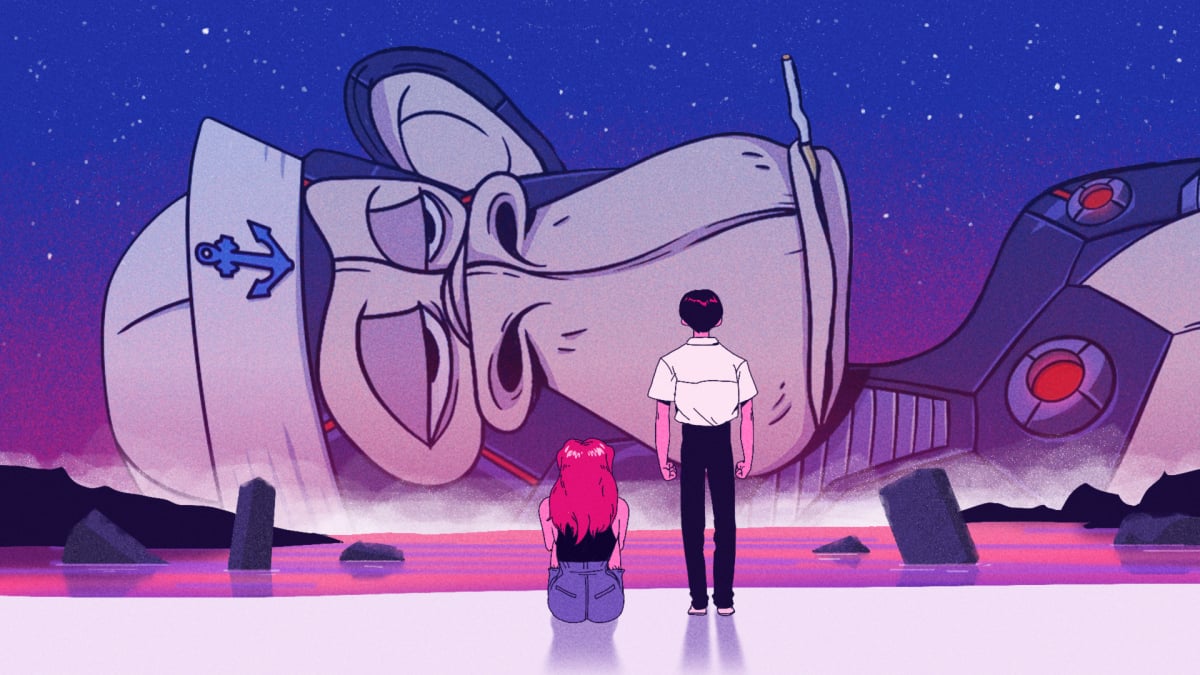
Last month in April, news went out that Yuga Labs, creators of the at-once mega-popular Bored Ape Yacht Club NFT, was undergoing restructuring. What followed was a round of layoffs as CEO Greg Solano — who uses the nickname Gargamel — bluntly stated that the company had “lost its way.”
That statement came just weeks after Bored and Hungry, a burger place that let customers order food with their cryptocurrency, shuttered its Long Beach location just two years after opening. Branded around the owner’s BAYC token, the ape-themed restaurant was touted as the first-ever “crypto fast food joint” — its closing bolstering the notion that the farcical BAYC-mania that gripped the country during the NFT boom of 2021 was finally on its last legs.
But when Bored and Hungry first opened, there were lines around the corner, signaling vindication to the apes, and propping up the sense that their investment into these NFTs, and in the community, were legit — both culturally and financially. To those on the outside, this was another example of just how dumb NFTs were becoming. During the NFT boom from 2021-2022, you couldn’t escape Yuga Labs’ ugly, anthropomorphized monkeys. Released in 2021 by Solano and Wylie Aronow (known as Gordon Goner), Bored Ape Yacht Club — a collection of 10,000 NFTs of edgy-looking primates — was one of the most successful web-3 Ethereum-based tokens to come out of the NFT frenzy.
It was hawked on late-night shows, featured in giant ads in Times Square, and almost every celebrity in the mainstream was “buying one.” There were talks of movies and TV deals, with Seth Green at one point working on a series based around his personal Bored Ape. Yuga Labs even started teasing a huge videogame within the Metaverse called Otherside. For many, it was a weird time to be alive, like aliens had taken over the world — how could these ugly apes capture the zeitgeist so fast?
“Beyond the things they had control over, they had good timing,” said Dan Olson, a documentarian and Youtuber best known for his channel Folding Ideas. “The guys at Yuga are savvy marketers with real social connections that let them get their product in front of real celebrities and other behind-the-scenes folks…and used that access with their initial crypto-audience success to further astroturf BAYC as a thing that normal people thought they needed to care about.”
It’s hard to overstate just how popular these little apes had become, but they were mainstream — a status symbol for the rich and the blueprint for success in the burgeoning NFT marketplace. Traditional buyers were buying apes for thousands, believing them to be legitimate forms of financial investment. At one point, Yuga Labs had managed to raise $450M in 2022, leading to a company evaluation of $4bn. To some, BAYC was the coolest name in tech.
Yuga Labs and its investors were seemingly on top of the world — until they weren’t. By 2023, the NFT bubble had burst, which negatively affected the perception of the industry as a speculative and volatile market. The downfall was marked by a steep decline in sales and a loss of public interest. As the hype subsided, many investors found themselves holding assets that had plummeted in value, leading to widespread financial losses and even a class action lawsuit against Yuga. The planned movies were shelved, the massive Metaverse game has long been teased but is still unreleased, and the Seth Green show legally can’t be made.
This fall was further compounded by regulatory scrutiny and skepticism from TradFi sectors, which questioned the sustainability and utility of NFTs beyond their initial novelty. Consequently, BAYC’s floor price on OpenSea hit an all-time low — down 90 percent from its all-time high.
That might feel like the last remnants of this phenomenon turning to dust, but you shouldn’t dance on the graves of these apes just yet.
How Bored Apes blew up in the first place
To be clear, the art of Bored Ape Yacht Club was never the selling point. Not that it wasn’t important, but nobody had ever said that these apes made great art pieces.
“It’s immediately identifiable and polished enough that it pops even in contrast to other NFT projects that are doing the same thing,” Olson told Mashable. “BAYC, Humanz, and other ‘success stories’ do at least have artwork that looks like someone at some point spent some meaningful investment of their finite mortal lifespan working on [it], which does manage to stand out in contrast to imitators that were literally assembled in an afternoon.”
In his documentary Line Goes Up — The Problem with NFTs, Olson describes an average NFT buyer as flush with money, lacking business acumen, socially isolated, and chronically online. A primarily male audience that’s equivalent to housewives who fall victim to Multi-Level Marketing schemes — groups of people who spend a lot of time alone at home and who feel marginalized from traditional avenues of wealth.
The culture of buying digital art has also changed significantly in the past decade. In the early 2010s, niche corners of the internet saw 4chan and Reddit users buying Pepe the Frog memes. For example, Feels Good Man had a totally wild scene from 2020 showing a man spending $39,000 on a Homer Simpson Pepe ’cause he “thought it was funny.”
The initial craze started when digital artist Beeple sold his NFT collection during a Christie Auction House sale for $69 million. However, many of the newsworthy NFT purchases were of internet memes sold by the minor internet celebrities immortalized in them. “Overly Attached Girlfriend,” “Disaster Girl,” and “Nyan Cat” sold for hundreds of thousands of dollars.
Mashable Light Speed
Crypto investors imagine themselves as rags-to-riches new money, outside the normie systems of money and government, aspirationally wealthy but still down to earth, so the fiction of “the yacht club that says ‘fuck’ then farts on you” successfully pulled a lot of psychological levers.”
– Dan Olson to Mashable
And while the language surrounding NFTs as a way for artists to have more control of their art has some merit, Olson and many others have rightly pointed out that NFTs mostly exist to get people to buy crypto. The reality since its inception is that crypto isn’t really spendable. Thus, that initial meme community was then co-opted by self-serious finance bros with little understanding of niche internet culture and saw NFTs more as a genuine financial investment — which is a big part of how they got such a bad rap.
One BAYC buyer who spoke to Mashable anonymously out of concern that they might be doxxed said that they had bought two apes early on for 1-2 ETH each — worth around $1-4000 each at the time.
“I guess what drew me to purchase one was the financial gain. I saw the opportunity and saw the writing on the wall that there was a market for it,” they said. “It was around COVID, people were lonely and it was a community people had on Discord and Twitter. You had your ape identifier and people would fuck with you based on that. It gave people something to be a part of and be included.”
And while they noted the absurdity of trading pictures of cartoons, the buyer sees their purchase as a foot in the door for a crypto future.
“I think the utility is there long-term with NFTs, once larger things are tokenized like house deeds or ticketing,” they told Mashable. “So while the whole cartoon ape thing is absurd, this is really the beginning stages. Within the space, new metas happen and people flock to whatever is hot and apes were hot because NFTs were the hot thing.”
Bored Ape Yacht Club, specifically, beyond the lucky timing and social connections just stood out from other NFTs in the marketplace. As Olson explained, unlike other tokens Yuga Labs came off as one of the only “functioning adults” in the space. That in combination with a “strong outsider-chic, above-it-all narrative” that was “very effective on technocratic crypto investors.”
“Their aesthetic, the irreverent attitude of their marketing materials, it was, from a product and marketing standpoint, well sculpted for their target market,” Olson said. “I suspect that they chose to base BAYC off apes in specific as an outgrowth of the use of [the term] ‘ape’ and ape-imagery in the meme stock mania that was still ongoing at the time and had very strong overlaps with crypto in terms of audience and messaging.”
How did the apes fare during ‘crypto winter’?
When NFTs were trendy, true believers thought their digital images could fetch millions. This was thanks in part to the highly volatile nature of NFTs and crypto, which shot up in price during the pandemic. This all happened in conjunction with the rise of small-time retail investors who connected on places like Reddit, leading to all that Gamestop “to the moon” Wall Street mania you might faintly remember from those strange days.
However, with “crypto winter” that all came crashing down, thanks in part to the global crypto collapse in 2022 following the bankruptcy of crypto hedge fund FTX. As the economic situation stabilized after the initial carnage, and people became less willing to take risks, investing in cryptocurrencies shifted from being perceived as an exciting and potentially lucrative hobby to being seen as a toxic, internet-based gambling addiction.
Now in 2024, ape holders come in three basic flavors: the bitter ones, like those currently suing Yuga Labs and the celebrities who helped hype the apes during the NFT explosion, claiming they were “misleadingly promoted” products; the intended users, who are still using their apes earnestly as branding for consumer endeavors; and grindset types, still holding on to their tokens in hopes of becoming kings in the decentralized future.
For that second camp, what made NFTs so popular in the first place was the potential use cases in branding — which is how Bored and Hungry came into existence. You can still find consumer goods marketed around licensed BAYC tokens in the form of whiskey that is a “Collaboration with Bored Ape #410,” apparel “featuring an official Bored Ape,” and even a water brand called “Ape Water” with Ape #3,628 printed on the can.
In the meantime, Yuga Labs has shaken up its leadership and staff. There were two CEO resignations in two years. The newest CEO, who happens to be Solano, a.k.a. “Gargamel,” returned to the role after a brief time away from the Miami-based company that oversaw those layoffs as mentioned above.
While Solano was away, Yuga Labs deepened its investment in the Metaverse gaming space, but as Fast Company put it earlier this year, the company is focused on more than games, and wants to be the Web3 equivalent of Disney — an “NFT entertainment conglomerate.” Despite the gaming push, Otherside remains unreleased, and Yuga has sold the IP of two of its other games. Most of this happened during Daniel Alegre’s short tenure as CEO — a role he was seemingly given due to his experience as an executive at Activision-Blizzard.
While Alegre was in charge, he told Bloomberg last year that Yuga would embrace the individual ape buyers who continued to push the brand with their consumer ventures. However with Solano back in charge and stating that the company has “lost its way,” there is an air of uncertainty about the future of Yuga and its larger ambitions in the metaverse and crypto space.
Mashable reached out to Yuga Labs for comment, but we haven’t heard back.
While the Apes’ creator focuses on the future, the present is bleak
The narrative around crypto and NFTs is built around what it can do for you and what it can do in the future. However, the reality is that none of those public-facing goals have yet to happen. As Bored Ape Yacht Club navigates the unpredictable waters of the crypto and NFT markets, its creators are setting their sights on future endeavors, leaving the project’s current state in a challenging position.
Despite the initial success and high market cap it once boasted, the value of the apes has dwindled significantly, representing only a fraction of its peak. On top of that, investors are doing anything to monetize their tokens that were at one point worth millions. However, they’ve lost a lot of popularity. If you fancy a trip to Thailand, you can buy yourself some weed from the Bored Ape Dispensary. Bored and Hungry still exists but only in Korea and the Phillipines. Ape Water is still a thing despite only being available in mini-marts around Las Vegas and some other parts of Nevada. And from all the expensive clothing collaborations it’s unclear how successful they’ve done as well.
“Right now the ape price is tanking a lot cause ETH-NFTs aren’t hot anymore,” the anonymous BAYC buyer told Mashable. “The new wave is Bitcoin Ordinals and Runes.”
As the year continues, Yuga Labs’ ability to adapt to these shifting tides will determine whether BAYC can regain its former glory or continue to face a diminishing market presence. But for right now, the cultural presence of this once illustrious “yacht club” still exists — barely — as overpriced streetwear.
Nfts
NFTs Maintain Upward Momentum, Sales Volume Surpasses $107 Million
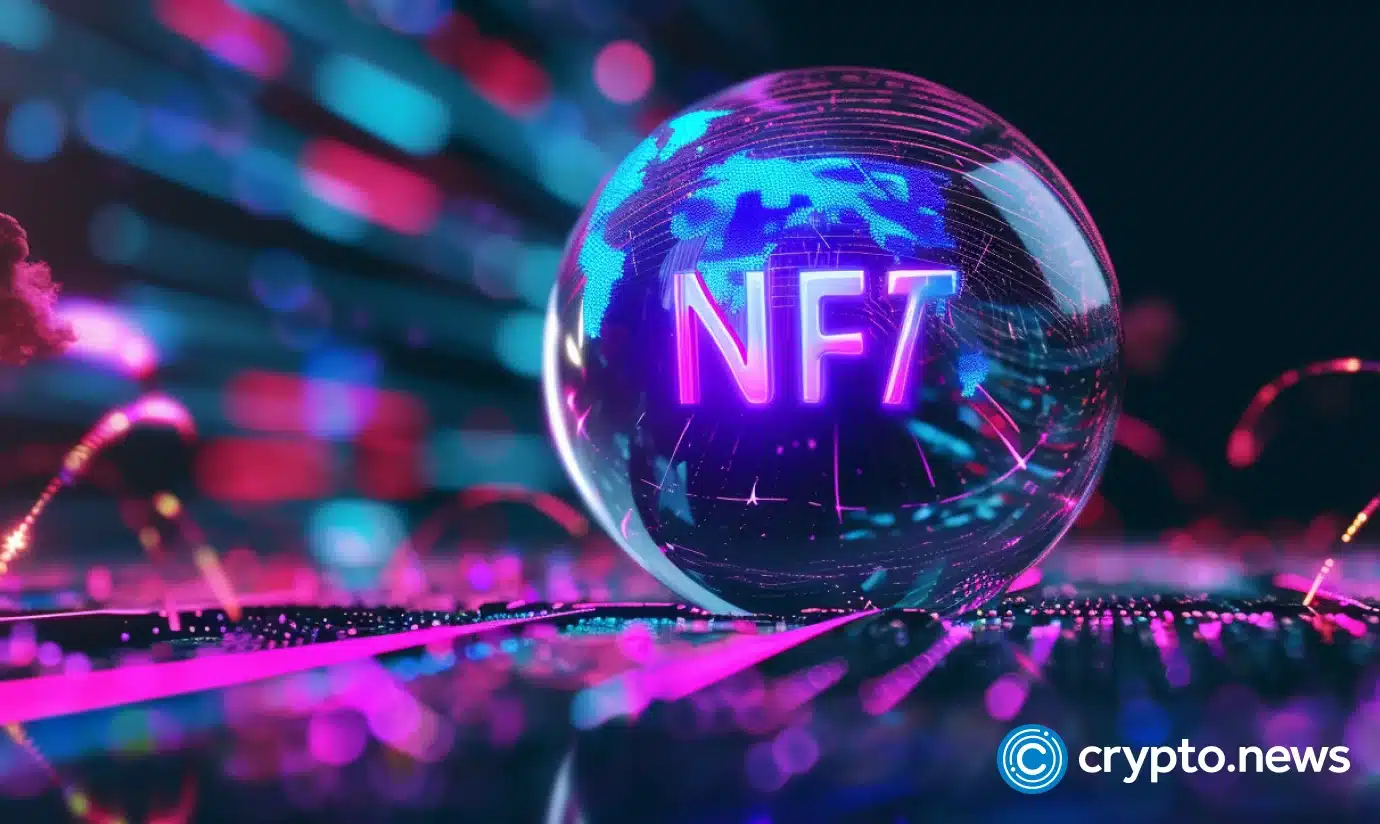
Non-fungible tokens, or NFTs, saw sales volume surge for the second week in a row, reaching $107 million, an increase of 8.5%.
A substantial increase in the number of NFT Buyers accompanied this growth, reaching 488,141 — a staggering increase of 89.56%.
On the other hand, the number of NFT sellers also increased by 69.8%, totaling 198,450, signaling an improved business environment and increased market engagement.
Below is a look at what happened in the NFT market over the past week.
Ethereum Maintains Leading Position While Solana and Bitcoin Follow
Blockchains by weekly NFT sales volume | Source: CryptoSlam
Over the past few weeks, Ethereum (ETH) continued to dominate the NFT market with $36.6 million in total sales, driven by 35,236 buyers, a 46.31% increase from the previous week.
Solana (GROUND) has emerged as a serious competitor, recording total revenue of $26.15 million, thanks to a substantial 114.07% increase in the number of buyers.
Bitcoin (Bitcoin) The NFT market also saw a notable surge, with total sales reaching $21.4 million, thanks to a staggering 222.29% increase in buyers.
Polygon (MATICS), which had the second best performance the previous week, saw its total sales volume drop by more than 15%, dropping it to 4th place just ahead of Immutable (IMX).
Other notable performances were achieved by Zora and Blast, which recorded the two largest percentage increases in sales volume, at 463% and 227% respectively.
Best Collections: Solana Monkey Business Shines
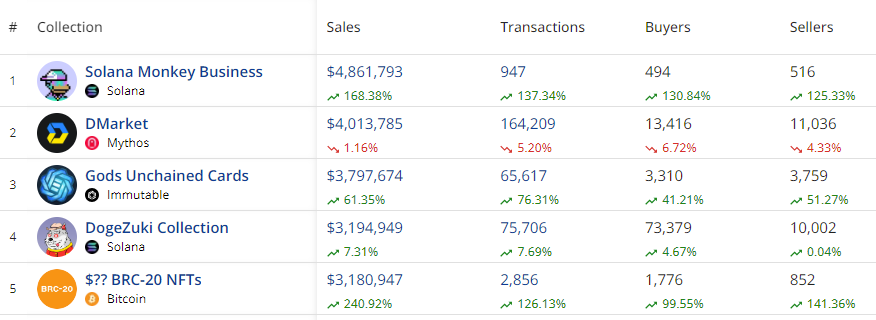 Ranking NFT collections by weekly sales volume | Source: CryptoSlam
Ranking NFT collections by weekly sales volume | Source: CryptoSlam
Among the top NFT collections, Solana Monkey Business came out on top with $4.86 million in sales, an increase of 168.38%. The collection also saw a significant increase in transactions (137.34%) and buyers (130.84%).
The DMarket collection on the Mythos blockchain, which recorded $4.01 million in sales, came in a close second. Interestingly, this is the only collection among the top 5 by sales volume to see a decline in the number of transactions and buyers.
Immutable’s Gods Unchained cards also made headlines with $3.8 million in sales, an increase of 61.35%. This collection saw notable growth in both transactions (76.31%) and buyers (41.21%), a testament to the growing popularity of blockchain-based trading cards.
Best-Selling NFTs and Fan Tokens
In terms of individual sales, Ethereum’s Autoglyphs #167 led with a sale of $274,561, followed by Bitcoin’s Protoshrooms with $148,574. Other notable sales included BNB’s kNFT: Locked kUSDT and Arbitrum’s Umoja Synths, highlighting the diversity and breadth of the NFT market across different blockchains.
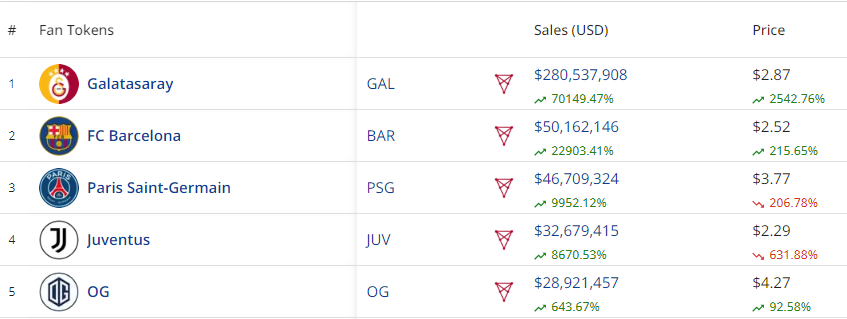 Top 5 Fan Tokens by Sales Volume
Top 5 Fan Tokens by Sales Volume
As can be seen in the table above CryptoSlamFan tokens also continued to see explosive growth, with Galatasaray’s token on the Chiliz blockchain recording a turnover of $280.5 million. This reflects an increase of 70149.47%.
FC Barcelona and Paris Saint-Germain followed with substantial sales volumes, indicating the growing popularity of sports-related NFTs.
Market consequences
The latest performance of the NFT market marks a significant turnaround, demonstrating resilience and renewed investor interest after a period of declining sales volumes.
This is the second consecutive week of improved sales, suggesting a potential upward trend. It is worth noting that this resurgence comes amid a broader recovery in the cryptocurrency market, which is currently valued at $2.55 trillion.
Major cryptocurrencies like Bitcoin, Ethereum, BNB, and Solana have all registered Prices have risen by double digits over the past week, further fueling optimism in the digital asset sector.
The correlation between rising cryptocurrency prices and the recovery of the NFT market could be an indication of strengthening investor confidence, setting a positive tone for the coming weeks.
Nfts
APENFT’s One-Day Trading Volume Hits $16.67 Million (NFT)

APENFT (NFT) fell 0.3% against the U.S. dollar in the 24-hour period ending at 9:00 a.m. ET on July 21. APENFT has a market cap of $8.54 million and $16.67 million worth of APENFT was traded on exchanges over the past day. Over the past week, APENFT has been trading 3.1% lower against the US Dollar. One APENFT token can now be purchased for around $0.0000 or 0.00000000 BTC on major cryptocurrency exchanges.
Here’s how other cryptocurrencies performed over the past day:
- KILT Protocol (KILT) is up 1.9% against the dollar and is now trading at $0.20 or 0.00000302 BTC.
- Aidi Finance (BSC) (AIDI) fell 2.2% against the dollar and is now trading at $0.0000 or 0.00000000 BTC.
- Zoo Token (ZOOT) fell 2.2% against the dollar and is now trading at $0.0652 or 0.00000239 BTC.
- CareCoin (CARES) fell 2.2% against the dollar and is now trading at $0.0809 or 0.00000297 BTC.
- Kitty Inu (KITTY) rose 1.9% against the dollar and is now trading at $95.84 or 0.00338062 BTC.
- Hokkaidu Inu (HOKK) rose 1.2% against the dollar and is now trading at $0.0004 or 0.00000001 BTC.
- Jeff in Space (JEFF) fell 2.2% against the dollar and is now trading at $2.75 or 0.00010076 BTC.
- Lumi Credits (LUMI) fell 0.7% against the dollar and is now trading at $0.0128 or 0.00000019 BTC.
- AXIA Coin (AXC) fell 0.1% against the dollar and is now trading at $13.43 or 0.00048094 BTC.
About APENFT
APENFT launched on March 28, 2021. The total supply of APENFT is 999,990,000,000,000 tokens and its circulating supply is 19,999,800,000,000 tokens. The official website of APENFT is apenft.orgThe official APENFT Twitter account is @apenftorg and his Facebook page is accessible here.
According to CryptoCompare, “APENFT is a blockchain-based platform created by the APENFT Foundation to create, buy, sell, and trade non-fungible tokens (NFTs) on the TRON and Ethereum networks. It allows for the ownership and trading of unique digital assets such as artwork, music, videos, and more. It also provides tools for artists and creators to create and promote their own NFTs, as well as participate in community events and governance.”
APENFT Token Trading
It is not currently generally possible to purchase alternative cryptocurrencies such as APENFT directly using US dollars. Investors wishing to acquire APENFT must first purchase Ethereum or Bitcoin using an exchange that deals in US dollars such as CoinbaseGDAX or Gemini. Investors can then use their newly acquired Ethereum or Bitcoin to purchase APENFT using any of the exchanges listed above.
Receive daily news and updates from APENFT – Enter your email address below to receive a concise daily summary of the latest news and updates for APENFT and associated cryptocurrencies with FREE CryptoBeat Newsletter from MarketBeat.com.
Nfts
Next US Vice President JD Vance Holds Bitcoin and NFTs, Expected to Boost MATIC and Algotech Post-Election

The blockchain technology landscape is about to transform as JD Vance, the likely next US vice president, emerges as a strong advocate for digital assets. Recent reports suggest that Vance not only holds Bitcoin (BTC) and NFTs, but is also willing to back promising blockchain initiatives like Polygon (MATIC) and Algotech (ALGT) post-elections.
JD Vance’s Cryptocurrency Investments Highlight Shift in Government Perspective
U.S. Senator JD Vance has garnered considerable attention for his recent investments in Bitcoin (BTC) and NFTs. Public records indicate that he owns between $100,000 and $250,000 worth of Bitcoin (BTC), indicating considerable interest in the success of the cryptocurrency market. This level of financial commitment from a high-profile government figure is unprecedented and underscores the growing credibility and promise of digital assets.
JD Vance’s interests extend beyond Bitcoin (BTC) to non-fungible tokens (NFTs), with reports suggesting his involvement in acquiring notable pieces from renowned collections. While the details of his NFT portfolio remain unknown, those who know the senator confirm his foray into this field.
This exploration of NFTs underscores Vance’s openness to exploring innovative and artistic applications of blockchain technology beyond cryptocurrencies’ typical role as assets or means of exchange. Vance’s involvement with cryptocurrency stands in stark contrast to the views of many of his peers in Congress, who often express doubt or hostility toward digital currency.
His direct involvement as an investor and user of these technologies gives him a unique perspective on their potential benefits and drawbacks. This practical understanding is likely to influence his stance on policy and regulation should he take on the role of vice president.
Polygon (MATIC) Hits $0.53, Eyes Breakout Amid Market Slowdown
The Vance administration, known for its support for cryptocurrencies, could significantly boost Polygon (MATIC), a major Ethereum layer 2 scaling project. MATIC has already attracted the attention of the developer community for its innovative solutions.
Even so, regulatory uncertainties have slowed widespread adoption and integration with traditional financial systems. Vance’s backing could serve as a driving force to unlock Polygon’s untapped capabilities.
A recent look at the MATIC token shows that its current trading value is $0.53, which represents an increase of over 2% in the last 24 hours. This surge coincides with a downturn in the broader cryptocurrency market, signaling solid fundamental strength and a growing sense of confidence among investors regarding Polygon’s future prospects.
Based on technical indicators, MATIC appears to be facing a resistance level that has persisted for several months, hinting at a potential breakout that could propel prices towards the previous peak around $1.29.
MATIC’s cutting-edge technology has taken a significant leap forward with the introduction of the Plonky3 zero-knowledge proof system. This innovation in zk-rollup technology is set to revolutionize MATIC’s scalability and efficiency, cementing its position as the premier choice for developers and enterprises.
Algotech (ALGT) Eyes $1 Price Hike When Its Exchange Launches
Algotech, a project that has attracted the interest of crypto enthusiasts and JD Vance, aims to transform algorithmic trading in the cryptocurrency space. Through the use of artificial intelligence and machine learning, Algotech offers advanced trading strategies to ordinary investors.
The platform’s innovative approach and ambitious roadmap are in line with JD Vance’s goal of driving financial innovation and making sophisticated investment tools more accessible to all. Algotech’s decentralized structure stands out, aligning perfectly with the core principles of blockchain technology.
By cutting out the middleman and giving users direct authority over their trading algorithms, Algotech embodies the essence of financial independence advocated by many in the crypto community, including Vance. This common ground makes Algotech a natural choice for endorsement by crypto-friendly leadership.
As Algotech’s pre-sale gains momentum, with over $9.6 million in funding, excitement is building for its official launch. Analysts have set lofty price targets, with some even suggesting that ALGT could surge to $1 shortly after it goes public.
While it’s wise to approach these predictions with caution, the combination of Algotech’s cutting-edge technology and the potential backing of key figures like JD Vance could pave the way for significant growth and adoption.
Learn more:
Disclaimer: This is a paid release. The statements, views, and opinions expressed in this column are solely those of the content provider and do not necessarily represent those of Bitcoinist. Bitcoinist does not guarantee the accuracy or timeliness of any information available in this content. Do your research and invest at your own risk.
Nfts
OG Crypto Artist Trevor Jones Unveils Groundbreaking Collection of Ordinals | NFT CULTURE | NFT News | Web3 Culture
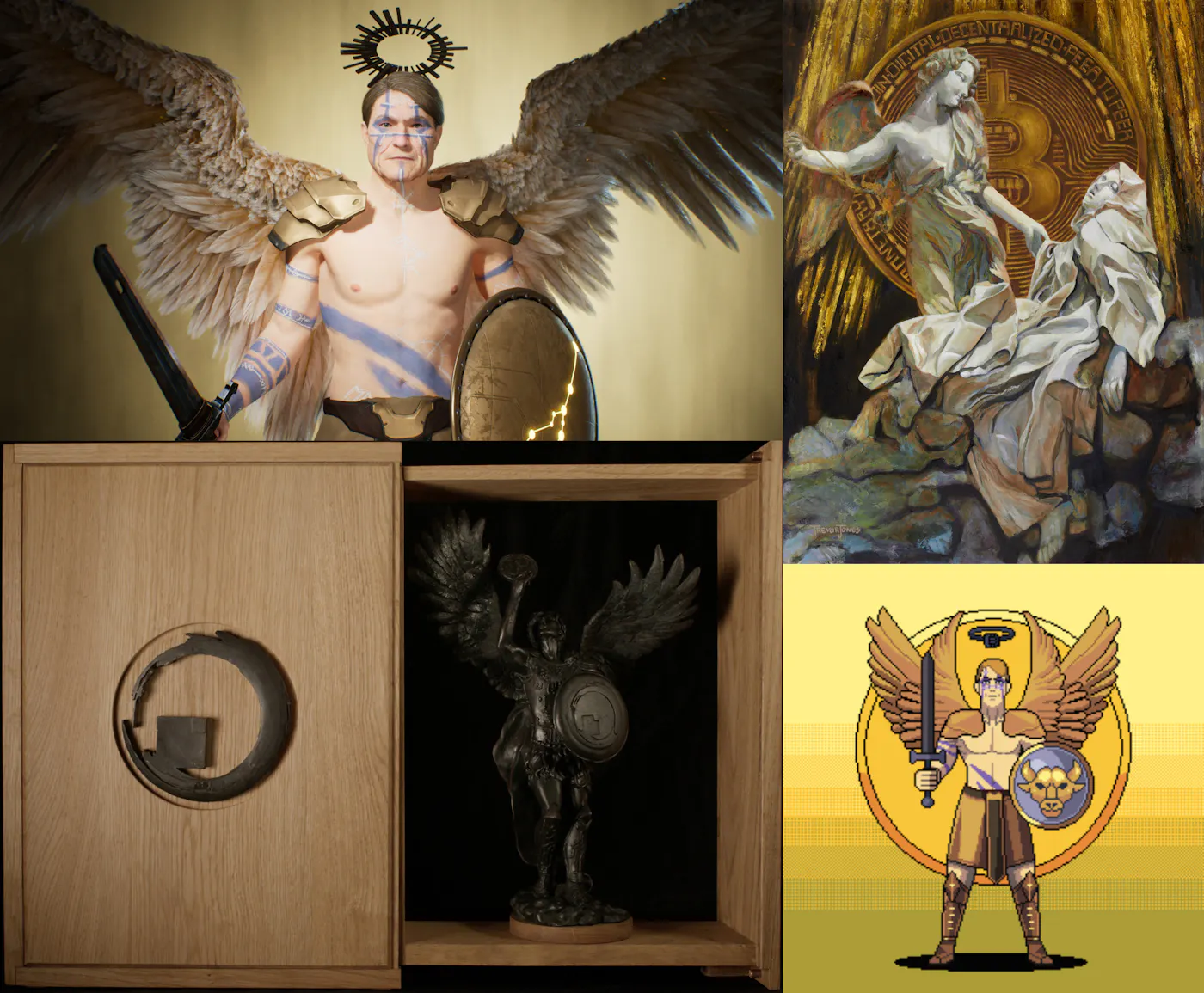
Trevor Jones’ New Genesis BTC Collection: CryptoAngels
Known for his innovative blend of physical and digital art, Trevor Jones continues to push the boundaries of the NFT space with his latest collection, CryptoAngels. Since his foray into Bitcoin-themed artwork in 2017, Jones has garnered a significant following, cementing his reputation with record-breaking sales and community events.
The Bitcoin Angel Journey
In 2021, Jones made headlines with his Bitcoin Angel open edition, selling 4,158 editions for an incredible $3.2 million in just seven minutes. This success paved the way for his latest venture, where he combines art, community, and technology in new ways. His annual Castle Parties, celebrating art, culture, and charity, have further cemented his place in the Web3 world.
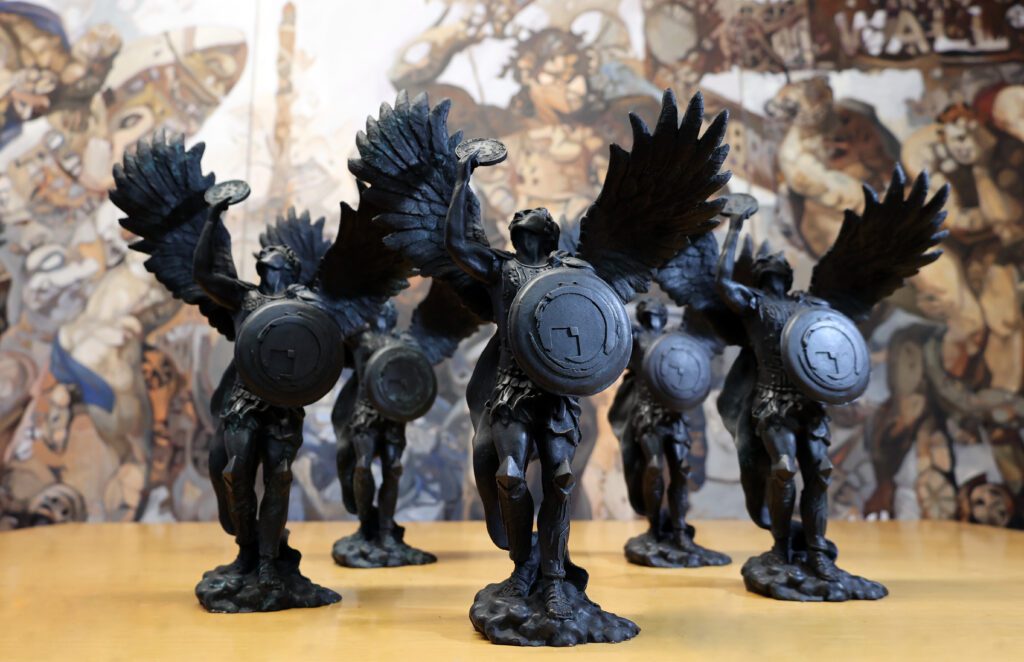
CryptoAngels Collection Review
Jones’ CryptoAngels collection is divided into two main stages: Archangels and CryptoAngels.
- Step 1: The Archangels The initial phase, Archangels, saw 21 collector’s packages sold for 87.9 ETH (approximately $335,291). Each package included:
- A physical bronze sculpture of the Bitcoin angel
- A 3D NFT avatar
- An Archangel Ordinal
Esteemed collectors like ModeratsArt, Batsoupyum, Bharat Krymo, Blondie23LMD, and 1Confirmation now lead the CryptoAngel army as Archangel Collectors.
- Step 2: CryptoAngels The second phase, set to launch on August 7, features 7,777 unique CryptoAngels. These will be available for minting via OrdinalsBot, starting with a whitelisting phase. Each CryptoAngel is distinct and named by Jones himself. The collection is organized into 21 cohorts, each associated with one of Archangel’s collectors, fostering sub-communities within the larger collection. Additionally, there are seven 1/1 CryptoAngels, making them exceptionally rare and not aligned with a cohort.
Connecting Bitcoin and Art
Jones, who has been a strong Bitcoin supporter since mid-2017, expresses his deep connection to the crypto community. He sees the CryptoAngels collection as a tribute to that community, bringing his iconic Bitcoin Angel motif to the blockchain.
“I have been personally investing in Bitcoin since mid-2017 and its ethos quickly inspired me in my crypto art journey. I have followed the growth of Ordinals since its inception and the CryptoAngels collection is my offering to a community that has welcomed me with open arms and given me the opportunity to bring my Bitcoin Angel motif to the chain where it was always meant to be,” said artist Trevor Jones.
Collectors’ opinions
“Bitcoin’s OG artist Trevor Jones, behind the Bitcoin Angels depositing ordinals on the immutable chain is a match made in crypto-native art heaven.” – Bharat Krymo (@krybharat – Archangel Collector)
“The 2018 Bitcoin Angel oil painting is one of the first crypto tributes to Bitcoin, so CryptoAngels on Ordinals is a natural extension of Trevor’s artistic journey” – batsoupyum (Archangel Collector)
Interactive experience and limited editions
Rounding out the collection, 21 special Angels will be available to mint for $7 each on Base, playable in the exclusive retro arcade game, Dante’s Pixel Inferno. The game challenges players to guide their Angel through the nine circles of Fiat Hell, collecting Bitcoin and earning rewards. Each Angel in the game has unique abilities and weapons.
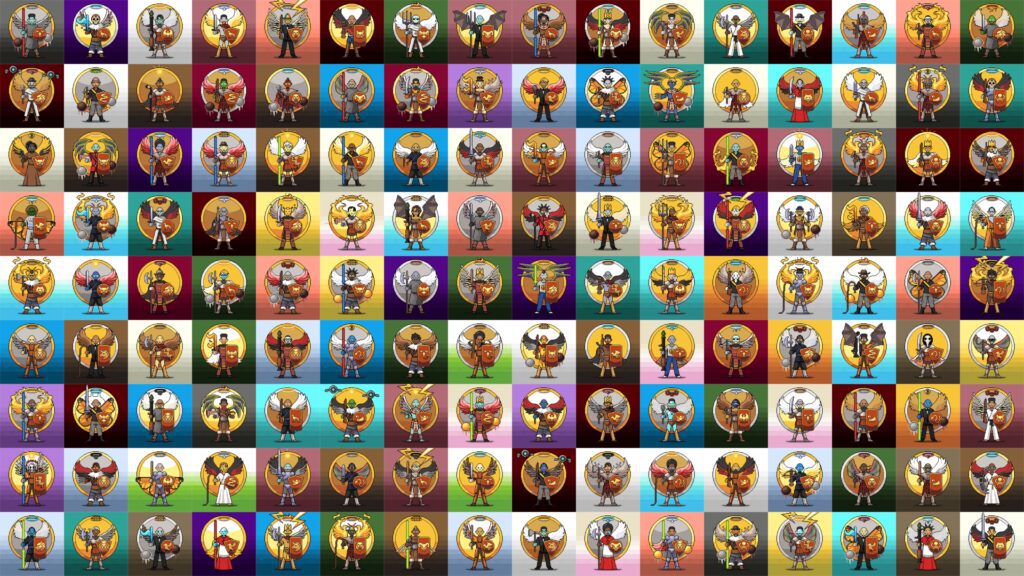

Whitelisting Opportunities and Community Engagement
Whitelisting (WL) opportunities are available through community partnerships, existing Bitcoin Angel OE and Trevor’s Ascended Angels holders, and weekly giveaways. To stay up to date and secure a spot on the whitelist, join Trevor Jones’ active Discord community.
TL;DR
Trevor Jones is launching the CryptoAngels collection on August 7th, building on his Bitcoin Angel legacy. Split into two stages, Archangels and CryptoAngels, the collection includes unique NFTs and physical artworks, fostering strong community connections. Exclusive gaming experiences and limited minting opportunities enhance engagement. Join the Discord for your chance to win.
-

 Nfts12 months ago
Nfts12 months agoShardLab Launches ZK-Based Tool for Digital Identity and NFT Vouchers
-

 News1 year ago
News1 year agoWallet recovery firms are abuzz as stranded cryptocurrency investors panic in the bitcoin boom
-
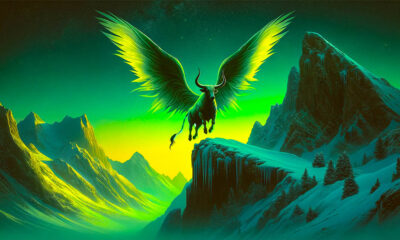
 Bitcoin12 months ago
Bitcoin12 months agoBitcoin, Ethereum, Solana and Cryptocurrency Markets Look Ready to ‘Send’ as Stars Align, According to Investor Chris Burniske
-

 Altcoins12 months ago
Altcoins12 months agoThree Altcoins Poised for Significant Growth in 2024: ETFS, OP, BLAST
-

 Altcoins12 months ago
Altcoins12 months agoAccumulate these altcoins now for maximum gains
-
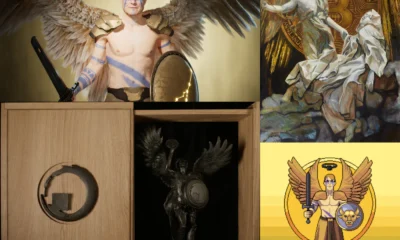
 Nfts12 months ago
Nfts12 months agoOG Crypto Artist Trevor Jones Unveils Groundbreaking Collection of Ordinals | NFT CULTURE | NFT News | Web3 Culture
-

 Bitcoin12 months ago
Bitcoin12 months agoBillionaires are selling Nvidia stock and buying an index fund that could rise as much as 5,655%, according to some Wall Street analysts
-

 Videos8 months ago
Videos8 months agoKamala just won the boner! [Bad For Crypto]
-

 Videos1 year ago
Videos1 year agoLIVE FOMC 🚨 Could be CATASTROPHIC for Altcoins!
-

 Videos1 year ago
Videos1 year agoSTOCK MARKET FUD! ⚠️ [Why This Is GREAT For Bitcoin Traders!]
-

 News1 year ago
News1 year agoA Guide for Newcomers & Beginners – Forbes Advisor
-

 Videos1 year ago
Videos1 year agoAttention: a historically significant BITCOIN signal has just appeared!

